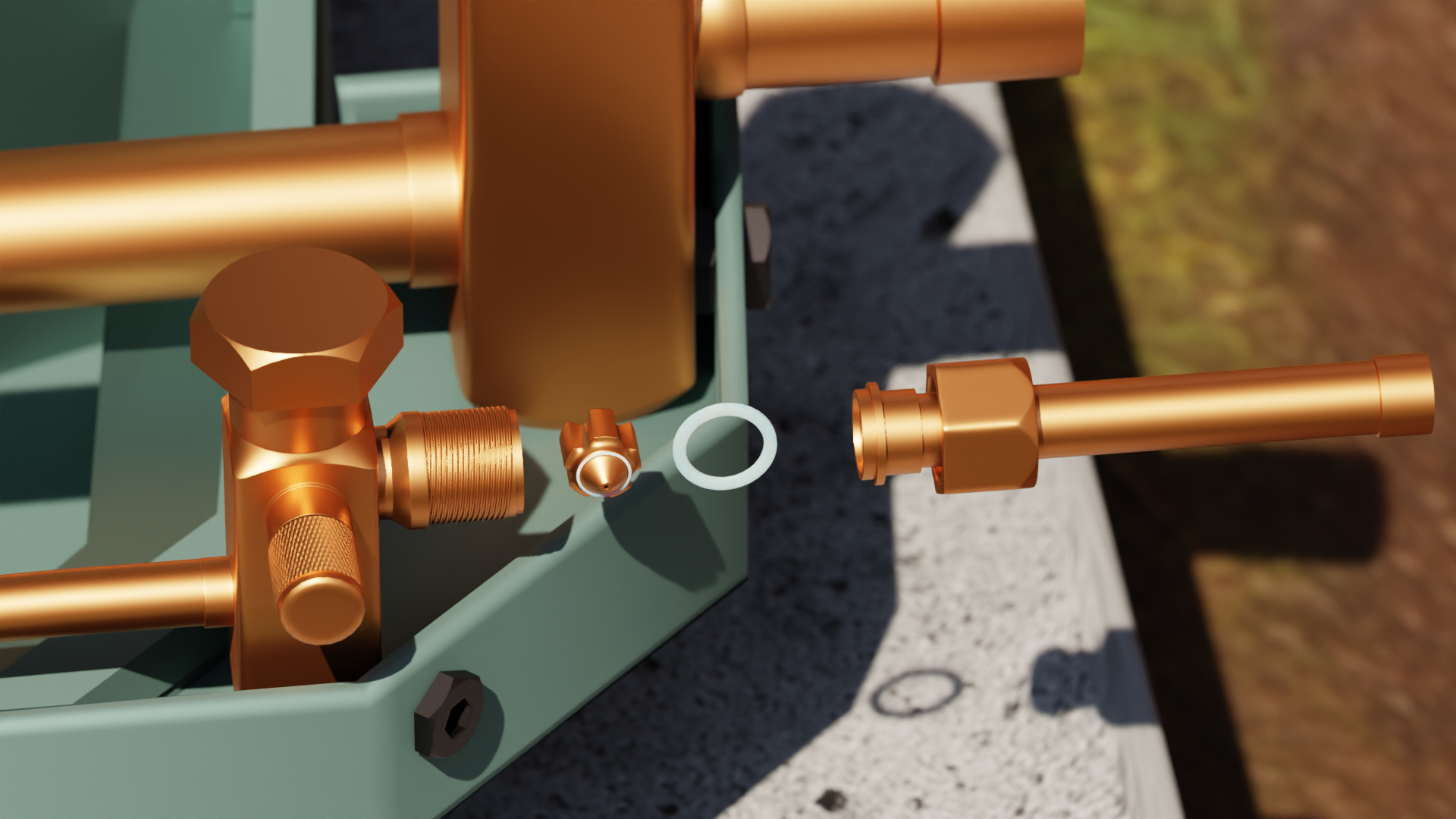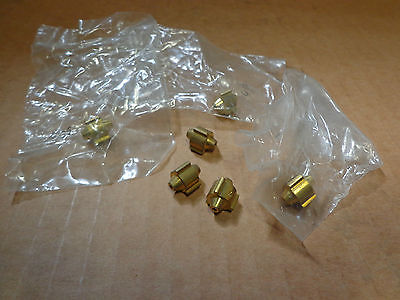Get Tech Tips
Subscribe to free tech tips.
Piston Design and Bypass

I remember it like it was yesterday. It was my first day of work as a trainee at my first technician job, just a wet-behind-the-ears kid fresh out of trade school.
It was a Monday morning, and the technicians and I were standing in the dusty warehouse surrounded by stacks and stacks of brand new condensing units, drinking the nasty warehouse coffee…
…and I was LOVING IT.
Finally, I had made it. I was one of the guys, listening to the war stories and good-natured ribbing while getting a caffeine fix for the day.
One of the senior techs was telling a story of low suction pressure, and he said, “So, I figured it has to be the wrong-sized piston,” and he stopped, looked over at me, and said, “You know what a piston is… RIGHT?”
It seemed like an eternity passed while the whole group stared at me. I mumbled, “A piston? Sure,” and gave a weak nod, hoping that “LIAR” wasn't emblazoned on my forehead for all to see.
The tech turned and finished his story, and my mind raced.
Of course, I knew what a piston was in an ENGINE or even a reciprocating compressor, but I had no clue that the little hunk of brass with a hole in it that we called a “fixed orifice” in school was called a piston.
Later, I learned all there was to know about sizing and replacing pistons. The installers I worked with often forgot to put in the correct size.
In case you are as confused as I was, a piston is a fixed orifice metering device used in systems for many years. They are especially used in residential heat pumps and straight cool systems. Even now that TXVs and EEVs are becoming more popular, you will still see pistons being used outside as the heat mode metering device in many Carrier models.

Piston Designs
I regularly see three common piston designs. I will group them by the manufacturers I know them by, though different manufacturers may also use them.
Lennox/Rheem Type
The piston shown above is the Lennox/Rheem style. It is directional, meaning it can only be installed one way, with the cone (tapered side) pointed at the evaporator and the other side pointed at the liquid line. This type uses seals toward the end of the cone to help prevent refrigerant bypass, and it also uses an o-ring to seal the “chatleff”-style housing.

Carrier Type
Carrier used to call their pistons “accurators“ and maybe still do, though I haven't heard that term for years. These pistons can be installed in either direction but still use the same “chatleff”-style housing as Lennox.

Trane Type
The Trane style has a much smaller size and is directional. The Trane housings do not use O-rings.
Piston Size
The physical exterior dimensions of the piston must be the same as all the others for that brand/series. Otherwise, it will not fit properly. It is only the internal bore diameter that changes.
Pistons are sized in decimals of an inch, like a gas orifice, usually from the 40s to the low 100s. When a piston is described as a “65 piston,” it is 0.065 of an inch, and a “104” would be 0.104 of an inch.

Check Flow Operation
In a heat pump system, every metering device needs a method of bypassing the metering device when the refrigerant flows in the opposite direction. This is done in TXVs by means of an internal or external check valve, but with a piston, the piston itself is allowed to slide in the housing. That allows restricted flow in one direction and unrestricted flow in the other.

That is actually where a piston gets its name; like a piston in an engine, it is a cylinder within a cylinder that can slide back and forth.
Any carbon, wax, or other solid material that gets into the piston housing can cause one of three undesired conditions.
Piston Restriction in the Desired Mode
If something gets into or covers the orifice bored into the piston, it can cause a restriction, resulting in low evaporator pressure, low suction, high superheat, and normal to high subcool. When a piston is restricted, and the system is a heat pump with a liquid line filter/drier properly installed, we will often alternate the system between cool and heat and see if that will free the contaminants and catch them in the line drier. Otherwise, the piston should be removed and inspected before it is cleaned or replaced. Then, you would install a new line drier.
Keep in mind that some systems have a screen built into the piston housing inlet that can also block up. Look for this once the piston housing is disassembled.
Piston Bypassing (Overfeeding)
If the piston fails to seat properly, it can overfeed the evaporator in the same way it would if the system had a larger bore size than it should. This will result in high suction pressure, low superheat, and low subcooling. In these cases, the piston should be removed and inspected for the proper bore size and signs of contamination around the outside or near the seal surfaces of the piston and the housing.
Opposite Mode Piston Restriction
In some cases, a heat pump piston may fail to unseat fully in the opposite mode. This will result in a pressure drop and an undesired restriction similar to a clogged liquid line filter drier. In this case, there will be a clear temperature drop across that piston when there should be little to no drop.
For example, if you are running a system in cooling and notice frost starting to form on the liquid line side of the outdoor, heat mode piston housing, you can be sure it is restricting in the opposite direction. Sometimes, you can resolve this by switching back and forth from heat to cool a few times, but it will often require disassembly and inspection.
This condition is similar to what happens when an external TXV check valve fails.
In Closing
A piston is a simple little hunk of brass, and it drives me nuts when a tech incompletes a call so that someone can “replace a failed piston.” A piston doesn't just fail; if one does have an issue, it could be the wrong size, or maybe something got into it and then got stuck in it or caused it to stop seating properly. Many of these issues lead back to improper vacuum, failing to flow nitrogen, getting copper shavings or sand in the system, etc.
Every good residential tech should have a little plastic container with various brands and sizes of pistons in it, in case they find one that is the wrong size or worn down from improper seating. I may be a little late to the game here since pistons are a dying breed, but they are simple enough that a return trip for a “failed piston” seems like a huge waste.
—Bryan











Comments
Curious as what determines diameter size of piston is it type of refrigerant or btu size of system
Curious as what determines diameter size of piston is it type of refrigerant or btu size of system
Donald Rappaport, both refrigerant type and system capacity (compressor pumping speed) determine piston orifice diameter. Generally, the manufacturer of the outdoor unit will specify which piston to use in the indoor coil.
Donald Rappaport, both refrigerant type and system capacity (compressor pumping speed) determine piston orifice diameter. Generally, the manufacturer of the outdoor unit will specify which piston to use in the indoor coil.
Could the cooling side be affected in a heat pump system if the installer did not install the piston and a filter drier. The liquid line seams to be very cold.
Could the cooling side be affected in a heat pump system if the installer did not install the piston and a filter drier. The liquid line seams to be very cold.
Yes. The system will not cool correctly without a metering device.
Yes. The system will not cool correctly without a metering device.
To leave a comment, you need to log in.
Log In